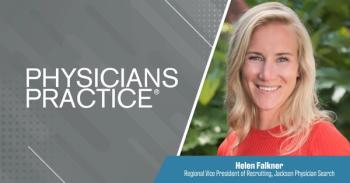
The need for whole health data
Many practices have yet to access the data with the greatest potential to impact patient outcomes and their own financial success.
We all know data is important. Over the past two decades, business intelligence became ubiquitous across industries, enabling organizations to gather, analyze and visualize vast amounts of information to make informed decisions. Today, those same tools – augmented with advanced artificial intelligence, machine learning and powerful analytics – have emerged as an important asset in health care, a sector that remains a study in technology extremes.
On one hand, clinical environments are increasingly marked by some of the most advanced technology, from sophisticated imaging innovations and connected medical devices to breakthroughs in genomics and personalized medicine that test the boundaries of supercomputing. On the other, fundamental business processes like approvals continue to rely on outdated methods from FAX machines to paperwork.
Most strikingly though, in a time when data is considered the new “
Bridging one gap only to find another
In recent years, significant progress was made to address the data gap between payers and providers. Despite the vast volume of clinical data in their possession, physicians historically struggled to access the population-level intelligence held by payers. Conversely, payers had insight into trends shaping cohorts of patients, but limited intelligence on the crucial nuances of care that dramatically impact individualpatient outcomes.
The shift from a fee-for-service to a value-based care approach quickly illuminated the importance of bridging this fundamental data gap, and forced payers and practices to more effectively share information to address performance and payment incentives. Significant gains followed, even as the move to a value-based approach revealed the importance and absence of an equally fundamental gap i.e. the absence of “whole health” data.
What is “whole health” data and why is it important?
“Whole health” data is the information that, when combined with traditional clinical data, empowers practices to fully impact the one metric that matters most – patient outcomes. For that reason, and because value-based approaches depend on outcomes, “whole health” data is also what enables practices to excel in the move to incentivized payment models, including HEDIS and Stars ratings, that impact profitability.
From a data science perspective, “whole health” data must therefore include information relevant to each patient’s outcome. This includes SDOH, insights on mental and behavioral health and diagnoses, and insights gained through the use of mobile devices – all consolidated on a platform that enables non-technical clinical users to uncover actionable insights with the powerful algorithms and models modern machine learning applications deliver. A quick exploration of each of these data categories reveals why it is imperative for practices to include them in patient assessments and care regimens.
SDOH data
Not surprisingly, patients who cannot afford medications or travel to appointments face ancillary health challenges. The results can be tragic. For example, we now know that black Americans in many rural areas died at a
Fortunately, SDOH data, when accessible and used at the practice level, makes a difference. In fact, one accountable care organization recently analyzed costly emergency room visits and found that many patients lived in the same impoverished neighborhood. Further analysis with machine learning applications found an extreme increase in ER visits on hot days – an indicator that led clinicians to realize the patients’ homes lacked air conditioning – a fact that exacerbated existing health conditions. The non-clinical and counter-intuitive step of purchasing air conditioners for the cohort dramatically decreased ER visits and made the ACO more profitable.
Mental health data
Behavioral health and physical health are, of course, connected with mental health issues often associated with comorbidities, among them substance abuse, eating disorders, anxiety and depression. As the
Non-compliance with treatment and medication plans is also a significant issue and substance abuse can be a factor in suicides, the leading cause of death for many age groups. Clearly, practices benefit if they know of patients’ mental and behavioral health challenges before theycomplete patient assessments and as they work to ensure healthful outcomes.
Mobile device data
The pandemic dramatically accelerated the use of mobile smart phones and made them the primary communications channel for many patients and providers, from scheduling appointments to attending consultations via telemedicine. Numerous mobile applications are also now available to track patients’ progress. Examples include ones that track activity levels, blood pressure, and blood sugar – all important factors for conditions like hyper-tension and diabetes.
Practices, therefore, should be able to include data from mobile phones in their patient assessments, and be able to update the electronic health record and treatment plans with data in real-time.
Clearly, it is important for physicians and practices to incorporate “whole health” data into their health equity and value-based care efforts; however, it is a process that should not be taken alone. Any steps to incorporate external or new sources of patient-related data into the practice should be taken with a partner who understands the regulatory issues associated with personally-identifiable information, and has a keen understanding of how data will be stored, safeguarded and parsed. Finally, the partner should be well versed on how practices can use the intelligence they acquire with the many intuitive artificial intelligence, machine learning and business intelligence tools now available for business users.
Jeffery Springer is senior vice president of product management at
Newsletter
Optimize your practice with the Physicians Practice newsletter, offering management pearls, leadership tips, and business strategies tailored for practice administrators and physicians of any specialty.




